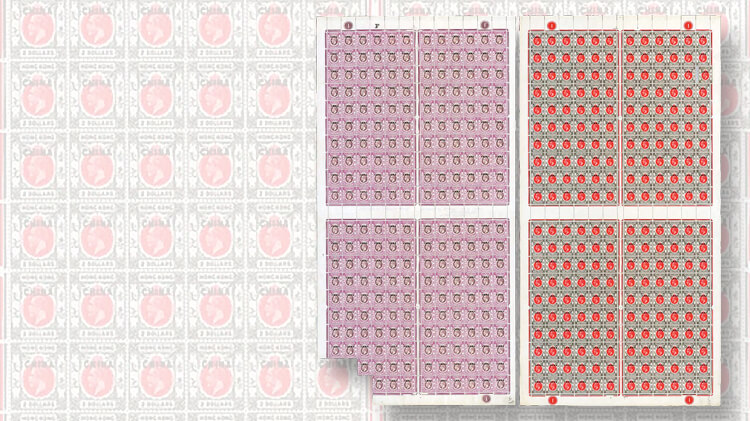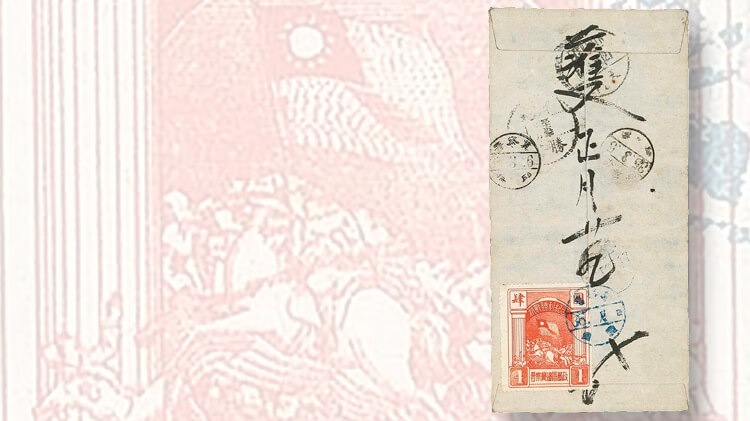Auctions
The rare Asian stamps that highlighted Spink’s Hong Kong sale
By Matthew Healey, New York Correspondent
After the 350-year-old auction firm Spink and Son held a pair of philatelic sales at its London headquarters in mid-December 2016, it held a sale of Chinese and Asian stamps and covers at its Hong Kong offices on Jan. 15.
The top item was a set of archival full sheets for the stamps of Britain’s Offices in China. These were produced between 1916 and 1927 by overprinting Hong Kong’s King George V definitive stamps with the word “CHINA.”
Connect with Linn’s Stamp News:
Sign up for our newsletter
Like us on Facebook
Follow us on Twitter
The sheets apparently were taken as proofs for registration purposes at the time the overprints were requisitioned from Somerset House in London, and were consigned to Spink by the British Postal Museum and Archive.
The sheets included the 1¢, 8¢, 10¢, 12¢, 20¢, 25¢, 30¢, $1, and $2 denominations from the set with a watermark of the Multiple Crown and CA pattern (Scott 1, 5-10, 12-13) and the 1¢, 2¢, 4¢, 6¢, 8¢, 10¢, and 25¢ of the second set with the Multiple Crown and Script CA watermark (17-22, 24). The reverse of each sheet has a typewritten note about the overprint, with the signature of the official responsible.
In the former set, one stamp from each sheet had been taken out for display at some point in the past and then carefully hinged back in place. Each of the sheets in the latter group is missing five stamps from the lower-left corner; the missing stamps are in the royal collection belonging to Queen Elizabeth II.
Very few other complete sheets of these issues survive. Together they sold for the equivalent of $60,800, including the 12½ percent premium levied by Spink in Hong Kong.
Among postal history lots in the Spink Hong Kong sale were numerous covers from China’s liberated areas, which operated with a large degree of autonomy in the 1940s, after the Japanese occupiers were beaten back and before the Communists consolidated control.
A cover from the Chin-Ki-Cha border area in northern China, also known as Chansi-Chahar-Hopeh, was mailed to Fushun City in March 1946, bearing a $4 Victory over Japan stamp.
The cover picked up a number of transit markings along the way.
But when the letter arrived at its Nationalist-controlled destination, the Communist-issued stamp was not recognized, and the letter was charged $20 postage due, indicated by a rectangular handstamp on the address side.
Going for six times its high estimate, the cover brought $13,000.
MORE RELATED ARTICLES
Headlines
-
US Stamps
Oct 7, 2024, 12 PMVasiliauskas named president of Mystic Stamp Co.
-
US Stamps
Oct 6, 2024, 5 PMApgar souvenir card available
-
US Stamps
Oct 6, 2024, 4 PMFirst Continental Congress and U.N. stamps receive Scott catalog numbers
-
World Stamps
Oct 5, 2024, 1 PMCanada Post continues Truth and Reconciliation series










